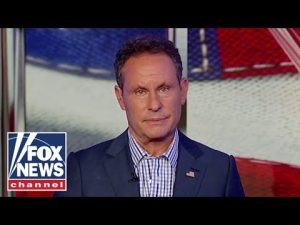**Inflation Woes: A Storm Brewing for American Consumers**
The U.S. economy seems to be standing on a wobbly tightrope, and the latest inflation news is not doing it any favors. Recent reports show that the Producer Price Index (PPI) has soared well beyond expectations. This alarming trend points to an inflation emergency that could cause some serious ripples in both business and consumer spending. Buckle up, because the financial ride ahead may be a bumpy one.
Just when people thought the inflation nightmare was getting better, the July PPI numbers drop like a lead balloon. Official reports reveal a month-over-month increase of 0.9%, while experts had predicted a much milder 0.2%. This marks the highest monthly jump since the shaky days shortly after the Russian invasion of Ukraine. On an annual basis, the situation looks even worse, with the PPI showing a 3.3% increase—far above the expected 2.5%. Clearly, these findings signal deep financial pressure on American businesses, which now face soaring costs passed straight from foreign suppliers to our very own wallets.
But wait, there’s more! July’s PPI is only the tip of the iceberg. The real kicker? This report doesn’t even account for the new tariffs kicking in on various goods. So far, the steel tariffs and a hefty 30% tariff on Chinese imports were the only ones in effect, but they certainly aren’t the full story. Companies had previously stocked up on goods to avoid immediate price hikes, but that strategy has run its course. As inventory runs low, American companies will be forced to raise prices or shrink product sizes—yes, folks, “shrinkflation” is back in style! As producers scramble to protect their bottom lines, consumers could be in for another twist of the inflation knife.
The Federal Reserve is watching these indicators like hawks, especially since they rely on the Personal Consumption Expenditures (PCE) index to set interest rates. With predictions of a 0.6% month-over-month print for core PCE, that translates to an annualized rate of over 7%. For an economy that was already on shaky ground, those numbers could be the straw that breaks the camel’s back. The Fed’s anticipated rate cuts might seem like a desperate measure, but cutting rates in the face of rising inflation is like throwing gasoline on a fire.
The job market creates a dilemma for the Fed. Though layoffs typically lead to lower demand—and sometimes, a cooling of inflation—it’s a risky balancing act these days. Even as the labor market slows, inflation refuses to back down. This bizarre situation has created a toxic mix of economic concerns. For a country that once had a thriving economy, the sight of inflation climbing while employment figures stumble resembles troubling times from the 1970s—a dreaded era characterized by high prices and stagnant growth.
As upcoming retail sales data trickles in, the real question becomes whether consumers can maintain their spending in this chaotic environment. If spending starts to decline, businesses could find themselves in deep trouble. Nobody wants to be stuck in a precarious position, quelled by rising costs while trying to keep customers happy. The best strategy during such uncertain times might just be diversification. Investors are advised to spread their assets across various classes and currencies, as the old saying goes, “Do not put all your eggs in one basket,” could not ring truer right now.
In summary, dark clouds are gathering on the horizon for American consumers. With alarming inflation numbers and uncertain economic forecasts, this could feel like a wild roller-coaster ride—thrilling for some but terrifying for many. The coming weeks will need close scrutiny as Americans navigate a maze of rising prices. Stay alert, stay diversified, and prepare for what lies ahead; it’s bound to be an interesting journey!







